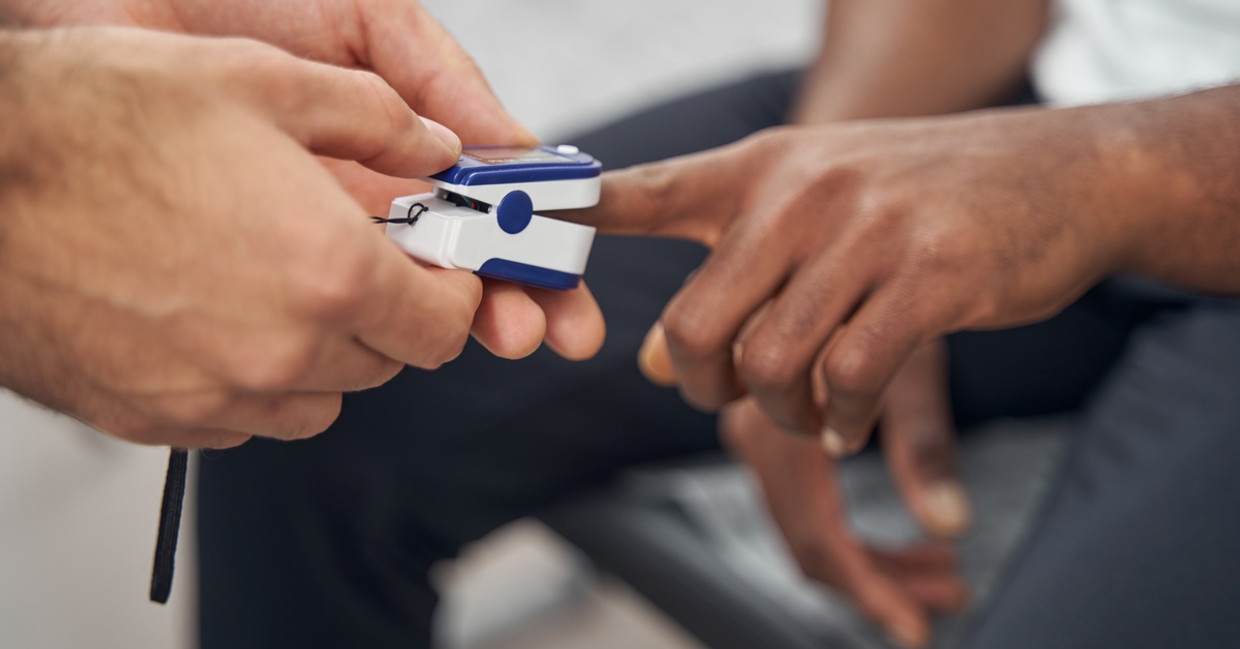The Role of Pulse Oximeters in Managing Respiratory Diseases
Respiratory diseases affect millions of patients worldwide, and you need reliable tools to monitor their condition effectively. The role of pulse oximeters in managing respiratory diseases has become increasingly important as healthcare providers work to catch complications early and adjust treatment plans quickly. These compact devices provide real-time data on your patients' oxygen saturation levels and heart rates.
When you're managing conditions like COPD, asthma, pneumonia, or pulmonary fibrosis, pulse oximeters provide the objective measurements you need to make informed clinical decisions. They've moved from hospital settings into everyday practice across clinics, home care, and emergency medicine. Understanding how to use these devices properly can significantly improve patient outcomes.
Understanding Pulse Oximetry Technology
Pulse oximeters measure light absorption through your patient's tissue, typically at the fingertip or earlobe. The device emits red and infrared light wavelengths that pass through the skin. Oxygenated hemoglobin and deoxygenated hemoglobin absorb these wavelengths differently.
The sensor picks up how much light passes through and calculates the oxygen saturation percentage. You get two key readings: SpO2 (peripheral oxygen saturation) and pulse rate. Most modern devices display results within seconds. The technology relies on adequate blood flow to the measurement site.
You should consider factors like poor circulation, cold extremities, or nail polish that might interfere with readings. A medical-grade pulse oximeter typically provides accuracy within two percent of arterial blood gas measurements under optimal conditions. You should understand these limitations when interpreting results for your patients.
Clinical Applications in Chronic Respiratory Conditions

Chronic respiratory diseases require ongoing monitoring, and pulse oximeters give you a practical way to track your patients between office visits. COPD patients benefit from regular oximetry readings because they can detect exacerbations before they become critical. You'll notice desaturation patterns that indicate when someone needs adjustments to their oxygen therapy or changes in medication.
Asthma management improves when medical professionals combine pulse oximetry with peak flow measurements. Patients with interstitial lung disease require frequent monitoring, as their oxygen levels can drop significantly during physical activity. You can use pulse oximeters during six-minute walk tests to assess their functional capacity and disease progression.
Some patients qualify for home oxygen therapy based on their oximetry readings. The data you collect helps justify insurance coverage for oxygen equipment. Regular monitoring also enables you to evaluate whether current treatments work effectively for each patient.
Emergency Assessment and Acute Care Settings
When patients arrive with respiratory distress, you need fast, accurate information. Pulse oximeters provide immediate feedback on oxygenation status before you receive the arterial blood gas results. Pneumonia, pulmonary embolism, and acute asthma attacks all cause oxygen desaturation that you can detect right away.
Triage decisions become clearer when you have objective data about oxygen levels. You can prioritize which patients need immediate intervention and which can wait safely. Emergency departments rely on continuous pulse oximetry monitoring for patients receiving supplemental oxygen or respiratory treatments.
The readings guide your decisions about oxygen delivery methods, including whether the nasal cannula provides enough support or if the patient needs a non-rebreather mask. The following critical care situations demand reliable monitoring:
- Patients under procedural sedation require continuous oximetry to prevent hypoxic events.
- Post-operative monitoring catches respiratory depression from anesthesia or pain medications.
- Rapid response teams use portable oximeters when evaluating patients throughout the facility.
- Transport situations need battery-operated devices that maintain monitoring during patient transfers.
Patient Education and Self-Monitoring Programs
Teaching your patients how to use a pulse oximeter at home extends your care beyond your medical practice. You empower people with chronic conditions to recognize the early warning signs and take appropriate care measures. They learn what their baseline readings should look like and when values indicate trouble.
Home monitoring works particularly well for patients with COPD, pulmonary hypertension, or those recovering from COVID-19 pneumonia. You give them specific parameters—if your oxygen drops below 90%, call the office or go to the emergency room. This approach reduces unnecessary hospital visits and catches problems before they escalate.
Telemedicine programs incorporate home pulse oximetry data into virtual visits. You can review a patient’s recorded readings and adjust their treatment plans remotely. The key is to provide clear instructions on proper device placement, when to measure, and how to interpret the results.
Some patients become anxious about checking their levels too frequently, so you need to set up appropriate monitoring schedules. Documentation helps you track trends over time and assess whether your current treatment plan is adequate.
Selecting and Maintaining Quality Equipment

Choosing the right pulse oximeters for your practice requires careful consideration of several factors. Accuracy matters most. You need devices that meet FDA standards and provide consistent results. Handheld units offer portability for home visits or emergency responses. Fingertip models work well for quick spot checks in clinic settings. Continuous monitoring systems with alarms are suitable for inpatient or procedural areas.
Battery life becomes essential if you use devices in multiple locations throughout the day. Display screens should be easy to read in various lighting conditions. Some models store data for later review, which helps when you're tracking patient trends. Durability affects your long-term costs. Devices that withstand repeated use and cleaning save money over time.
You should calibrate the equipment according to the manufacturer's recommendations. Regular cleaning prevents cross-contamination between patients. Staff training ensures everyone uses the devices correctly and recognizes when readings seem questionable. Keep spare batteries and backup units available, so that technical issues don't interrupt patient care.
Accurate Monitoring for Better Respiratory Outcomes
Pulse oximeters have become essential tools in modern respiratory medicine. You depend on these devices to guide your treatment decisions, monitor disease progression, and educate your patients about their conditions. The role of pulse oximeters in managing respiratory diseases continues to expand as technology improves and healthcare moves toward more home-based monitoring.
Understanding the capabilities and limitations of pulse oximetry helps you use the data more effectively. Your patients benefit from timely interventions based on objective measurements rather than waiting for symptoms to worsen. Whether you're managing chronic conditions in an outpatient setting or responding to acute respiratory crises, reliable pulse oximetry supports better clinical outcomes.
Investing in quality health care equipment and proper training ensures you get accurate readings when they matter most. Trust Cascade Health Care for dependable pulse oximeters and other essential medical equipment that help you deliver precise, confident care every day.
Recent Posts
-
Must-Have Tools and Instruments for Obstetric Care
Obstetric care demands a unique blend of clinical expertise, intuitive patient management, and preci
-
Positions for Out-of-Bed Laboring During a Home Birth
For midwives, doulas, and other healthcare professionals who attend home births, facilitating a safe



